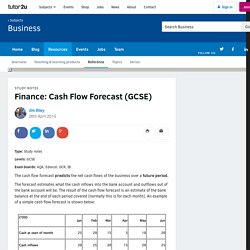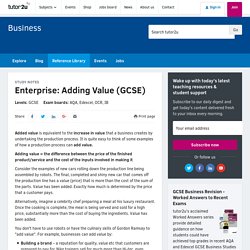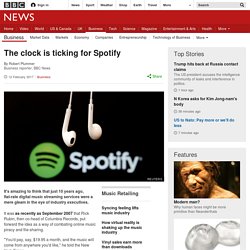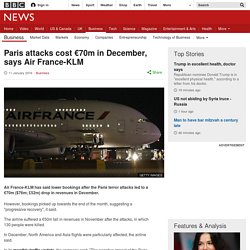

3.1.1 Cash Flow Forecast - Business study notes. The cash flow forecast predicts the net cash flows of the business over a future period.

The forecast estimates what the cash inflows into the bank account and outflows out of the bank account will be. The result of the cash flow forecast is an estimate of the bank balance at the end of each period covered (normally this is for each month). An example of a simple cash flow forecast is shown below: A business uses a cash flow forecast to: Identify potential shortfalls in cash balances – for example, if the forecast shows a negative cash balance then the business needs to ensure it has a sufficient bank overdraft facilitySee whether the trading performance of the business (revenues, costs and profits) turns into cash.Analyse whether the business is achieving the financial objectives set out in the business plan (which will almost certainly include some kind of cash flow budget)
3.1.1 Enterprise: Adding Value. Adding value = the difference between the price of the finished product/service and the cost of the inputs involved in making it Consider the examples of new cars rolling down the production line being assembled by robots.

The final, completed and shiny new car that comes off the production line has a value (price) that is more than the cost of the sum of the parts. 3.1 Understanding Mission Aims & Objectives. 3.1.1 Nike's Profits Bounce Back. 3.1.2 Which is the bigger business - Ford or Tesla? Market Capitalisation. 3.1.2 Tesco face the power of Shareholders over Booker. 3.1.2 Business Organisation: Introduction to Business Ownership. There are three options for a business' legal structure: (1) Sole Trader An individual who runs an unincorporated business on his or her own.

Sometimes otherwise known as a "sole proprietor" or (in the case of professional services) a"sole practitioner". 3.1.2 Forms of Business. 3.1.2 Shareholders and Incorporated Businesses. 3.1.2 The clock is ticking for Spotify. Image copyright Reuters It's amazing to think that just 10 years ago, flat-rate digital music streaming services were a mere gleam in the eye of industry executives.

It was as recently as September 2007 that Rick Rubin, then co-head of Columbia Records, put forward the idea as a way of combating online music piracy and file-sharing. "You'd pay, say, $19.95 a month, and the music will come from anywhere you'd like," he told the New York Times. "In this new world, there will be a virtual library that will be accessible from your car, from your cell phone, from your computer, from your television.
" As it turned out, he was essentially describing Spotify, which launched just over a year later. 3.1.3 McDonalds and the External Environment. Back in November 2015 we asked Can McDonalds Succeed with Premium Burgers?

Here we take a look at how else McDonalds are tackling their slow decline to keep up with competitors in our ever changing environment. Talking to the Guardian's Graham Ruddick, Pomroy explains the challenges McDonalds are faced with and how they are trying to overcome them. 3.1.3 Paris attacks cost €70m in December, says Air France-KLM. Image copyright Getty Images Air France-KLM has said lower bookings after the Paris terror attacks led to a €70m ($76m; £52m) drop in revenues in December.

However, bookings picked up towards the end of the month, suggesting a "progressive recovery", it said. The airline suffered a €50m fall in revenues in November after the attacks, in which 130 people were killed. In December, North America and Asia flights were particularly affected, the airline said. 3.1.3 PESTLE - How Businesses Can Handle Political Risks. 3.1.3 Locating International Production - How Lego…